BloostonLaw Telecom Update Published by the Law Offices of Blooston, Mordkofsky, Dickens, Duffy & Prendergast, LLP [Portions reproduced here with the firm's permission.] www.bloostonlaw.com |
| Vol. 12, No. 26 | x July 1, 2009 |
 U.S. Senate Confirms Genachowski, McDowell; Obama Formally Nominates Clyburn, Baker Late last Thursday, the U.S. Senate confirmed Democrat Julius Genachowski to be the next FCC Chairman, and reconfirmed Republican Robert McDowell as FCC Commissioner. Both were approved by the Senate Commerce Committee only a week before. Mr. Genachowski took over as Chairman this week, and Jonathan Adelstein (D) left the FCC for his new post as Administrator of the Rural Utilities Service (RUS). Michael Copps (D), who had been Acting Chairman, will continue at the agency as a Commissioner. In the meantime, President Obama formally nominated South Carolina Public Service Commissioner Mignon Clyburn, a Democrat, and Meredith Attwell Baker, a Republican, and former head of the National Telecommunications and Information Administration (NTIA), to fill the remaining seats on the Commission. At our deadline, Senate Commerce Committee confirmation hearings had not been scheduled for Clyburn and Baker. The Senate also confirmed Lawrence E. Strickling as Assistant Secretary for Communications and Information at the Department of Commerce. In this role, Strickling will serve as Administrator of the National Telecommunications and Information Administration (NTIA), which advises the President on communications and information policies and regulates spectrum use by Government agencies. BloostonLaw contacts: Hal Mordkofsky, Ben Dickens, Gerry Duffy, and John Prendergast.
|
Guidelines Released For Stimulus Applications At our deadline, the government has just released its Notice of Funds Availability and application procedures for the BTOP and BIP programs to be administered by NTIA and RUS, respectively. Applications will be accepted between July 14, 2009 and August 14, 2009 (5pm Eastern) for funding under these programs. The applications must be filed electronically, unless the applicant is disabled, or is requesting less than $1million and would suffer a hardship if required to submit electronically. Additional information on filing procedures, including the specific application package and procedures, can be found at http://www.broadbandusa.gov. Of vital importance to our clients, the government has determined that the public interest will be served by allowing for-profit corporations to participate in the BTOP grant process. Otherwise, most of our clients would have been ineligible to seek BTOP funding. Applications will be evaluated in a two-step process: In the Step One, applications will be reviewed for completeness and eligibility, with incomplete or ineligible proposals being rejected. Information to be provided includes a lengthy list of mandatory showings relating to the technology to be used, the amount of funding needed, the nature of the population to be served, timeline for deployment, etc. Maps, funding proposal calculations, financial wherewithal showings, demonstration of need, and numerous other showings must be included. The surviving applications will then ranked based on “scoring criteria”. The highest scoring applications will be invited to participate in Step Two by submitting further “due diligence” documentation in support of their proposals. If the additional information does not “adequately verify” the merits of the proposal, the application will be rejected. If the additional documentation is adequate, then the application will be among those considered for grant. For BTOP applications, NTIA will assign a rating of 1 to 5 to the surviving proposals, and the states will be given an opportunity to make recommendations concerning funding for projects in or affecting their jurisdiction. NTIA has reserved the right to propose modifications to an applicant to address any differences between the original proposal and what NTIA is willing to fund. Thus, there will be a potential for “negotiations” in the process, involving both the state government and NTIA. NTIA’s BTOP Director will then take all of the applicant information, state input, modification negotiations, etc. and submit a package of grant recommendations to the Office of Telecommunications and Information Applications (OTIA). OTIA will approve the winning projects, based on the following criteria: 1. The NTIA evaluation of the “scoring criteria”.
2. The due diligence review score.
3. Satisfaction of the BTOP program’s purpose and priorities.
4. Geographic distribution of the proposed grant awards and diversity of populations served.
5. Range of technologies and uses associated with the proposal.
6. Avoidance of redundancies and/or conflicts with other Federal initiatives and loan/grant programs for broadband, including avoidance of “unjust enrichment”.
7. Availability of funds; and
8. State recommendations/fit with state broadband plan.
A similar process will be followed for BIP. A more detailed discussion of the numerous requirements associated with both programs will be sent to our clients by supplement to our newsletter. It is clear that proposals must be prepared with all due haste, given the amount of documentation that will be required of each applicant. BloostonLaw contacts: Ben Dickens, Gerry Duffy & Mary Sisak NTIA, RUS Grant Limited Waivers Of “Buy American” Provisions For BTOP, BIP Stimulus Program Projects The National Telecommunications and Information Administration (NTIA) and the Rural Utilities Service (RUS) have granted a limited waiver of section 1605 of the American Recovery and Reinvestment Act of 2009 with respect to certain broadband equipment that will be used in projects funded under the Broadband Technology Opportunities Program (BTOP) and the Broadband Initiative Program (BIP), respectively. NTIA and RUS have determined that, as applied to certain broadband equipment used in BTOP and BIP projects, application of the “Buy American” provision would be inconsistent with the public interest. While the language below describes NTIA’s rationale for granting the limited waiver for the BTOP program, RUS used similar language for granting its limited waiver for the BIP program. A modern broadband network is generally composed of the following components: broadband switching, routing, transport, access, customer premises equipment, end-user devices, and billing/operations systems. The Buy American provision would prohibit NTIA from awarding a BTOP grant to a public applicant unless that applicant could certify that each element of each broadband network component containing iron, steel, and manufactured goods are produced in the United States. NTIA determined that it would be difficult, if not impossible, for a BTOP applicant to have certain knowledge of the manufacturing origins of each component of a broadband network and the requirement to do so would be so overwhelmingly burdensome as to deter participation in the program. Requiring a BTOP applicant to request a waiver on a case-by-case basis also would be such an administrative burden on the applicant as to discourage participation in the program and would increase the agency’s time and costs for processing BTOP applications for broadband infrastructure projects. Thus, implementing the BTOP without a limited programmatic waiver encompassing broadband network components would jeopardize the success of the program and undermine the broadband initiative. First, much of the finished products used to manage and operate broadband infrastructure and offer broadband service are manufactured outside of the United States. The manufacturing supply chain varies by product and changes constantly due to the influence of global supply and demand. The result is a very competitive and complex production landscape with components and end products being manufactured and assembled in a large number of countries. While, arguably, NTIA could have relied on the “non-availability” exception for granting a waiver, the burden placed on NTIA in sourcing and evaluating the availability of each component of broadband equipment would be significant, and the task of sourcing and evaluating would be difficult to complete given the speed with which Congress has told NTIA to allocate the BTOP funds. In addition, requiring public entities to document the origin of broadband equipment and their components in order to determine whether they fit within the scope of the Buy American provision would severely complicate those applicants’ ability to apply for funds and would place an undue burden on State and local governments. Taken as a whole, these burdens would cause delays and would likely thwart the goal of Congress to “establish and implement the [BTOP] grant program as expeditiously as practicable,” and the Recovery Act’s requirement that NTIA to obligate all funds under BTOP by September 30, 2010. Second, a limited waiver will help facilitate the construction of modern broadband networks – an essential component of the Recovery Act. Applicants to BTOP must have the flexibility to incorporate the most technically-advanced components into their infrastructure, and a limited waiver gives them the ability to incorporate the latest technologies. Third, consistent with the Recovery Act, a limited waiver will help stimulate job growth for construction workers, technicians, equipment designers, engineers, and others who will operate the broadband infrastructure. Fourth, while the Office of Management and Budget has clarified which countries would be exempt from the Buy American provision, some of the key countries that produce broadband equipment would not be exempt. Finally, the broadband industry is very dynamic and global, and equipment can change over the course of a buildout. Subjecting public applicants for BTOP funds to the Buy American provision ultimately would slow broadband deployment and undermine the broadband initiatives. NTIA and RUS granted limited waivers for the following essential components of a modern broadband infrastructure: - Broadband Switching Equipment – Equipment necessary to establish a broadband communications path between two points.
- Broadband Routing Equipment – Equipment that routes data packets throughout a broadband network.
- Broadband Transport Equipment – Equipment for providing interconnection within the broadband provider’s network.
- Broadband Access Equipment – Equipment facilitating the last mile connection to a broadband subscriber.
- Broadband Customer Premises Equipment and End-User Devices – End-user equipment that connects to a broadband network.
- Billing/Operations Systems – Equipment that is used to manage and operate a broadband network or offer a broadband service.
Note that this list does not include fiber optic cables, coaxial cables, cell towers, and other facilities that are produced in the United States in sufficient quantities to be reasonably available as end products. To the extent that an applicant wishes to use equipment that is not covered by this waiver, it may seek a waiver on a case-by-case basis as part of its application for BTOP/BIP funds, stating the statutory exemption upon which it is relying and its rationale for receiving a waiver. BloostonLaw contacts: Ben Dickens, Gerry Duffy, Mary Sisak, and Cary Mitchell. FCC Adopts 1st Come, 1st Served Digital Licensing For Rural LPTV, TV Translators Beginning August 25, 2009, the FCC will permit the filing of applications for new digital-only low power television (LPTV) and TV translator stations in rural areas, for major changes to existing analog and digital LPTV and TV translator facilities in those areas, and, in the case of incumbent analog stations, for digital companion channels. No applications for new analog facilities will be accepted. This filing opportunity will be subject to a geographic restriction and to first-come, first-served processing. In addition, to further assist all LPTV and TV translator stations in their transition to digital, the FCC will begin accepting applications on a nationwide, first-come, first-served basis for new digital-only LPTV and TV translators stations, for major modifications to existing analog and digital stations in these services, and, in the case of incumbent analog stations, for digital companion channels without geographic restriction on January 25, 2010. Again, no applications for new analog facilities will be accepted. The FCC reminds incumbent LPTV, TV translator, and Class A television stations that they may file an application for on-channel digital conversion or flash-cut at any time. So that they may retain processing priority, the FCC encourages those incumbent stations that have not already done so to file their flash-cut applications prior to the commencement of first-come, first-served digital licensing. The FCC is providing notice so that incumbent stations and their technical consultants will have sufficient time to prepare and to file their flash-cut applications prior to the commencements of both the rural and nationwide first-come, first-served digital licensing opportunities. The FCC also reminds applicants that additional adjustments in the facilities and assigned channels of full-power television broadcast stations may be required as the transition of that service to digital mode is optimized. These adjustments, the extent of which is not fully known at this time, could have an adverse impact, including displacement, on applicants filing under the procedures in the FCC’s current Public Notice. Filings Procedures Beginning August 25, 2009, all interested parties including incumbent LPTV and TV translator stations, may begin filing applications for new digital-only LPTV and TV translator stations, for major changes to existing analog and digital facilities and, in the case of incumbent analog stations, for digital companion channels, where such applications specify transmitting antenna site coordinates (geographic latitude and longitude) located in a rural area, which is defined as an area more than 121 kilometers (75 miles) from the reference coordinates of the cities listed in Appendix A of the FCC’s LPTV Order. These applications will be filed on a first-come, first-served basis and will be “cut-off” daily. Beginning January 25, 2010, all interested parties, including incumbent LPTV and TV translator stations, may begin filing applications for new digital-only LPTV and TV translator stations, for major changes to existing analog and digital LPTV and TV translator stations, and, in the case of incumbent analog stations, for digital companion channels without geographic restriction. Such applications will be filed on a first-come, first-served basis and will be “cut-off” daily. All applications for new digital-only LPTV and TV translator stations or for major changes to existing digital or analog LPTV and TV translator stations are subject to a $705 filing fee. There is no application filing fee for the submission of a flash-cut or digital companion channel application, or for applications for replacement digital translator stations as these applications are for minor changes. Applicants must file their applications electronically using FCC Form 346. Paper-filed applications will not be accepted. Instructions for use of the electronic filing system are available in the CDBS User’s Guide, which can be accessed from the electronic filing web site at: http://www.fcc.gov/mb/cdbs.html. Important Reminders. All mutually exclusive applications will be resolved by competitive bidding (auctions). Applications for new digital LPTV and TV translator stations and for replacement digital translators may only be filed for in-core channels 2-51. Applicants proposing digital companion channels on channels 52-59 must certify in their long form application the unavailability of any suitable in-core channel. “Suitable in-core channel” is defined as one that would enable the station to produce a digital service area comparable to its analog service area. In addition, Section 74.786(d) of the Commission’s rules provides that applicants proposing digital companion channels on channels 52-59 must notify all potentially affected 700 MHz band wireless licensees of the spectrum comprising the proposed TV channel and the spectrum in the first adjacent channels thereto not later than 30 days prior to the submission of their long form application. Clients should contact us with regard to the specifics of these requirements. BloostonLaw contacts: Hal Mordkofsky, Gerry Duffy, and Cary Mitchell. FCC OPEN MEETING IS FIRST FOR GENACHOWSKI: The FCC’s July 2 open meeting, the first for new FCC Chairman Julius Genachowski, will include a presentation on the status of the Commission’s process for developing a National Broadband Plan and a presentation on the Digital TV transition. All items have been deleted from the Sunshine Agenda; they were adopted on circulation. In remarks to the Commission staff, the Chairman said, in part, “As the country’s expert agency on communications, it is our job to pursue this vision of a more connected America, focusing on the following goals: - Promoting universal broadband that’s robust, affordable and open.
- Pursuing policies that promote job creation, competition, innovation and investment.
- Protecting and empowering consumers and families.
- Helping deliver public safety communications networks with the best technology to serve our firefighters, police officers, and other first responders.
- Advancing a vibrant media landscape, in these challenging times, that serves the public interest in the 21st century.
- Seizing the opportunity for the United States to lead the world in mobile communications.
“These are just some of the goals we will pursue in the days ahead.” BloostonLaw contacts: Hal Mordkofsky, Ben Dickens, Gerry Duffy, and John Prendergast. FCC EXTENDS REPLY DEADLINE FOR NOI ON NATIONAL BROADBAND PLAN: The FCC has extended the deadline for reply comments on its Notice of Inquiry (NOI) on developing a national broadband plan. Reply comments in this GN Docket No. 09-51 proceeding are now due July 21. The FCC notes that it must deliver its plan to Congress by February 17, 2010. The NOI seeks comment from all interested parties on the elements that should go into a national broadband plan. The plan must reflect an understanding of the problem, clear goals for the future, a route to accomplish those goals, and benchmarks along the way, the FCC said, adding that it must also reflect the input of all stakeholders—industry; American consumers; large and small businesses; federal, state, local, and tribal governments; non-profits; and disabilities communities. BloostonLaw contacts: Ben Dickens, Gerry Duffy, and Mary Sisak. FCC EXTENDS REPLY DEADLINE FOR CMRS ANNUAL COMPETITION REORT: The FCC has extended the reply comment dates regarding the soliciting of data and information to evaluate the state of competition among providers of commercial mobile radio services (CMRS) for its 14th Annual Report and Analysis of Competitive Market Conditions with Respect to Commercial Mobile Services. Reply comments in this WT Docket No. 09-66 proceeding are now due July 13. BloostonLaw contacts: Hal Mordkofsky, John Prendergast, and Cary Mitchell. FCC TO CONDUCT RFA REVIEW OF 1998 REGULATIONS: The FCC has requested comment on its review of rules adopted by the agency in calendar year 1998 which have, or might have, a significant economic impact on a substantial number of small entities. The purpose of the review is to determine whether such rules should be continued without change, or should be amended or rescinded, consistent with the stated objectives of section 610 of the Regulatory Flexibility Act (RFA), to minimize any significant economic impact of such rules upon small businesses. The FCC’s public notice asking for comment lists those regulations to be reviewed during the next twelve months. In succeeding years, as here, the Commission will publish a list for the review of regulations promulgated ten years preceding the year of review. In reviewing each rule in a manner consistent with the requirements of section 610 the FCC will consider the following factors: (a) the continued need for the rule; (b) the nature of complaints or comments received concerning the rule from the public; (c) the complexity of the rule; (d) the extent to which the rule overlaps, duplicates, or conflicts with other federal rules and, to the extent feasible, with State and local governmental rules; and (e) the length of time since the rule has been evaluated or the degree to which technology, economic conditions, or other factors have changed in the area affected by the rule.
The FCC will publish comment dates in this CB Docket No. 09-102 proceeding 60 days after publication of the item in the Federal Register. BloostonLaw Contacts: Ben Dickens, Gerry Duffy, and Mary Sisak. FCC OKs EMBARQ/CENTURYTEL MERGER: Embarq and CenturyTel filed a series of applications seeking FCC approval to transfer control of certain wireless licenses and domestic and international section 214 authorizations from Embarq and CenturyTel to a reorganized CenturyTel, which would combine the two companies. Grant of these applications will result in the transfer of domestic and international section 214 authorizations and the assignment of certain spectrum licenses. The FCC found that the proposed transaction will benefit the public interest. Accordingly, the Commission granted its consent to the transfer and assignment applications conditioned on compliance with certain voluntary commitments by the parties, which shall now constitute binding and enforceable conditions of its approval. The FCC said it is particularly cognizant of the fact that the Applicants serve primarily rural areas. Furthermore, it recognizes that the telecommunications landscape in rural areas appears to be in transition, and more changes may result from the American Recovery and Reinvestment Act of 2009, comprehensive reform of the Universal Service Fund, and future transactions. Despite anticipated changes, the FCC stresses that “this merger is evaluated based on the record before us. It does not set a precedent for future transactions, and we expect that the Applicants will comply with any changes to the law that occur in the future.” BloostonLaw contacts: Ben Dickens, Gerry Duffy, and Mary Sisak. FCC ANNOUNCES PROCEDURES, RULES FOR UPCOMING BRS AUCTION: The FCC has announced the procedures and rules for the upcoming auction of licenses for unassigned Broadband Radio Service (BRS) spectrum. This auction, which is designated as Auction 86, is scheduled to commence on October 27, 2009. Auction 86 will offer 78 licenses. The spectrum associated with licenses to be auctioned in Auction 86 was previously allocated and made available under the Multipoint Distribution Services (MDS) and Multichannel Multipoint Distribution Service (MMDS), the predecessor services to BRS. In Auction 6, which was completed in 1996, the Commission conducted competitive bidding for 493 Basic Trading Area (BTA) licenses to provide access to all BRS spectrum nationwide that was not covered by preexisting MDS or MMDS site-based licenses. Overlay licenses for 75 of the BTAs originally offered in Auction 6 are available now as a result of default, cancellation, or termination of the earlier auction licenses. In one case, BTA 396, the available license does not cover the entire BTA due to a previous partitioning. Underlying, preexisting incumbent BRS licenses within these geographic areas remain intact, and must be protected from interference in accordance with the BRS rules. This auction will also include three additional licenses for BRS service areas in the Gulf of Mexico. The following dates and deadlines apply: Auction Seminar: August 5. Short-Form Application (FCC Form 175) Window Opens: August 5. Short-Form Application (FCC Form 175) Filing Window Deadline: August 18. Upfront Payments (via wire transfer): September 24. Mock Auction: October 23. Auction Begins: October 27.
BloostonLaw contacts: Hal Mordkofsky, John Prendergast, and Cary Mitchell. NORTEL CREDITORS OBJECT TO CDMA, LTE SALE: Creditors and suppliers of bankrupt Nortel Networks have filed objections to Nokia Siemens Networks' $650 million bid for most of Nortel's wireless assets, according to Reuters. One of the creditors, MatlinPatterson, is complaining that the current bidding process may freeze out other potential bidders. Nokia Siemens has said it wants to complete the deal by the third quarter of this year. "These restrictions serve only to permit Nokia-Siemens to effectively lock down these valuable core assets," MatlinPatterson said in a U.S. court filing. The creditor is seeking a two-week extension of the sale process, and is arguing that more value could potentially be squeezed out of Nortel. Reuters said that Nortel supplier Flextronics Corp and other unsecured creditors filed their own objections to the proposed sale in the U.S. Bankruptcy Court in Wilmington, Delaware. Flextronics, which is Nortel's largest supplier, said it has concerns that its contractual rights and claims may be affected by the proposed sale of the CDMA and LTE assets. In other Nortel news, Light Reading is reporting that the company did not agree to sell off all of its LTE assets and is actually holding onto some key LTE patents. The deal includes the stipulation that Nokia Siemens will license "certain intellectual property necessary for the manufacture of the products and the provision of services." Nokia Siemens also made some progress of its own on the LTE front, winning a $352 million loan from the European Investment Bank to develop its multimode radio access network technology, which allows service providers to run GSM and LTE from a single base station. JULY 10: DTV EDUCATION REPORT. New 700 MHz licensees from Auction No. 73 are required to file a report with the FCC concerning their efforts to educate consumers about the upcoming transition to digital television (DTV). Last summer, we explained that the FCC’s Part 27 rules require 700 MHz licensees that won licenses in Auction No. 73 to file quarterly reports on their DTV consumer outreach efforts through the Spring of 2009. However, in an apparent contradiction, the same rules do not impose any substantive consumer education requirements on 700 MHz license holders. This situation has not changed. The reporting rule simply states that “the licensee holding such authorization must file a report with the Commission indicating whether, in the previous quarter, it has taken any outreach efforts to educate consumers about the transition from analog broadcast television service to digital broadcast television service (DTV) and, if so, what specific efforts were undertaken.” Many licensees may not have initiated 700 MHz service as of yet. However, to the extent they are also an Eligible Telecommunications Carrier (ETC) and recipient of federal USF funds, separate FCC rules found in 47 C.F.R. Part 54 (Universal Service) require ETCs to send monthly DTV transition notices to all Lifeline/Link-Up customers (e.g., as part of their monthly bill), and to include information about the DTV transition as part of any Lifeline or Link-Up publicity campaigns until June 30, 2009. BloostonLaw contacts: Hal Mordkofsky and Cary Mitchell. JULY 20: FCC FORM 497, LOW INCOME QUARTERLY REPORT. This form, the Lifeline and Link-Up Worksheet, must be submitted to the Universal Service Administrative Company (USAC) by all eligible telecommunications carriers (ETCs) that request reimbursement for participating in the low-income program. The form must be submitted by the third Monday after the end of each quarter. It is available at: www.universalservice.org. BloostonLaw contacts: Ben Dickens, Gerry Duffy, and Mary Sisak. JULY 31: FCC FORM 507, UNIVERSAL SERVICE QUARTERLY LINE COUNT UPDATE. Line count updates are required to recalculate a carrier's per line universal service support, and is filed with the Universal Service Administrative Company (USAC). This information must be submitted on July 31 each year by all rate-of-return incumbent carriers, and on a quarterly basis if a competitive eligible telecommunications carrier (CETC) has initiated service in the rate-of-return incumbent carrier’s service area and reported line count data to USAC in the rate-of-return incumbent carrier’s service area, in order for the incumbent carrier to be eligible to receive Interstate Common Line Support (ICLS). This quarterly filing is due July 31 and covers lines served as of December 31, 2007. Incumbent carriers filing on a quarterly basis must also file on September 30 (for lines served as of March 31, 2008); December 30 (for lines served as of June 30, 2008), and March 31, 2009, for lines served as of September 30, 2008).. BloostonLaw contacts: Ben Dickens, Gerry Duffy, and Mary Sisak. JULY 31: FCC FORM 525, COMPETITIVE CARRIER LINE COUNT QUARTERLY REPORT. Competitive eligible telecommunications carriers (CETCs) are eligible to receive high cost support if they serve lines in an incumbent carrier’s service area, and that incumbent carrier receives high cost support. CETCs are eligible to receive the same per-line support amount received by the incumbent carrier in whose study area the CETC serves lines. Unlike the incumbent carriers, CETCs will use FCC Form 525 to submit their line count data to the Universal Service Administrative Company (USAC). This quarterly report must be filed by the last business day of March (for lines served as of September 30 of the previous year); the last business day of July (for lines served as of December 31 of the previous year); the last business day of September (for lines served as of March 31 of the current year); and the last business day of December (for lines served as of June 30 of the current year). CETCs must file the number of working loops served in the service area of an incumbent carrier, disaggregated by the incumbent carrier’s cost zones, if applicable, for High Cost Loop (HCL), Local Switching Support (LSS), Long Term Support (LTS), and Interstate Common Line Support (ICLS). ICLS will also require the loops to be reported by customer class as further described below. For Interstate Access Support (IAS), CETCs must file the number of working loops served in the service area of an incumbent carrier by Unbundled Network Element (UNE) zone and customer class. Working loops provided by CETCs in service areas of non-rural incumbents receiving High Cost Model (HCM) support must be filed by wire center or other methodology as determined by the state regulatory authority. CETCs may choose to complete FCC Form 525 and submit it to USAC, or designate an agent to file the form on its behalf. BloostonLaw contacts: Ben Dickens, Gerry Duffy, and Mary Sisak. JULY 31: REPORT OF EXTENSION OF CREDIT TO FEDERAL CANDIDATES. This report (in letter format) must be filed by January 30 and July 31 of each year, but ONLY if the carrier extended unsecured credit to a candidate for a Federal elected office during the reporting period. BloostonLaw contacts: Hal Mordkofsky, John Prendergast, and Richard Rubino. AUGUST 1: FTC BEGINS ENFORCEMENT OF RED FLAG RULES. The Federal Trade Commission (FTC) has delayed enforcement of the “Red Flag” Rules for 90 days until August 1, 2009, to give creditors and financial institutions additional time to implement identity theft programs. Under the new rules, all businesses that maintain a creditor-debtor relationship with customers, including virtually all telecommunications carriers (but other companies as well), must adopt written procedures designed to detect the relevant warning signs of identity theft, and implement an appropriate response. The Red Flag compliance program was in place as of November 1, 2008. But the FTC will not enforce the rules until August 1, 2009, meaning only that a business will not be subject to enforcement action by the FTC if it delays implementing the program until August 1. The FTC announcement does not affect other federal agencies’ enforcement of the original Nov. 1, 2008, compliance deadline for institutions subject to their oversight. Other liabilities may be incurred if a violation occurs in the meantime. The requirements are not just binding on telcos and wireless carriers that are serving the public on a common carrier basis. They also apply to any “creditor” (which includes entities that defer payment for goods or services) that has “covered accounts” (accounts used mostly for personal, family or household purposes). This also may affect private user clients, as well as many telecom carriers’ non-regulated affiliates and subsidiaries. BloostonLaw has prepared a Red Flag Compliance Manual to help your company achieve compliance with the Red Flag Rules. Please contact Gerry Duffy (202-828-5528) or Mary Sisak (202-828-5554) with any questions or to request the manual. JULY 31: SECTION 43.61(a) INTERNATIONAL TELECOMMUNICATIONS TRAFFIC REPORTS. All common carriers that provided international facilities-based and facilities-resale switched and private line services, or pure switched resale services, during calendar year 2007, are required to file the report regardless of the amount of traffic they provided. Facilities-based services are provided using international transmission facilities owned in whole or in part by the carrier providing the service. Facilities-resale services are provided by a carrier utilizing international circuits leased from other reporting international carriers. International facilities-based and facilities-resale switched message telephone and private line services data must be filed on a country-by-country, region and world total basis. International switched telegraph, telex and other miscellaneous services data may be filed on a region and world total basis only. Carriers that provided international pure switched resale services for the calendar year may file world totals only. BloostonLaw contacts: Ben Dickens, Gerry Duffy, and Mary Sisak. JULY 31: CARRIER IDENTIFICATION CODE (CIC) REPORTS DUE. Carrier Identification Code (CIC) Reports must be filed by July 31 of each year. These reports are required of all carriers who have been assigned a CIC code by NANPA. Failure to file could result in an effort by NANPA to reclaim it, although according to the Guidelines this process is initiated with a letter from NANPA regarding the apparent non-use of the CIC code. The assignee can then respond with an explanation. (Guidelines Section 6.2). The CIC Reporting Requirement is included in the CIC Assignment Guidelines, produced by ATIS. According to section 1.4 of that document: At the direction of the NANPA, the access providers and the entities who are assigned CICs will be requested to provide access and usage information to the NANPA, on a semi-annual basis to ensure effective management of the CIC resource. (Holders of codes may respond to the request at their own election). Access provider and entity reports shall be submitted to NANPA no later than January 31 for the period ending December 31, and no later than July 31 for the period ending June 30. It is also referenced in the NANPA Technical Requirements Document, which states at 7.18.6: CIC holders shall provide a usage report to the NANPA per the industry CIC guidelines … The NAS shall be capable of accepting CIC usage reports per guideline requirements on January 31 for the period ending December 31 and no later than July 31 for the period ending June 30. These reports may also be mailed and accepted by the NANPA in paper form. Finally, according to the NANPA website: If no local exchange carrier reports access or usage for a given CIC, NANPA is obliged to reclaim it. The semi-annual utilization and access reporting mechanism is described at length in the guidelines. BloostonLaw contacts: Ben Dickens, Gerry Duffy, and Mary Sisak. AUGUST 3: FCC FORM 499-Q, TELECOMMUNICATIONS REPORTING WORKSHEET. All telecommunications common carriers that expect to contribute more than $10,000 to federal Universal Service Fund (USF) support mechanisms must file this quarterly form. (Normally this form is due on August 1, but because August 1 falls on a Saturday this year, the next business day is Monday, August 3.) This filing requirement applies to wireline and wireless carriers (including CMRS, paging, and other commercial service providers), as well as resellers. It also applies to certain Private Mobile Radio Service (PMRS) licensees, such as for-profit paging and messaging, dispatch and two-way mobile radio services. The FCC has modified this form in light of its recent decision to establish interim measures for USF contribution assessments. The form contains revenue information from the prior quarter plus projections for the next quarter. Form 499-Q relates only to USF contributions. It does not relate to the cost recovery mechanisms for the Telecommunications Relay Service (TRS) Fund, the North American Numbering Plan Administration (NANPA), and the shared costs of local number portability (LNP), which are covered in the annual form (Form 499-A) that was due April 1. For-profit private radio service providers that are “de minimis” (those that contribute less than $10,000 per year to the USF) do not have to file the 499-A or 499-Q. However, they must fill out the form and retain the relevant calculations as well as documentation of their contribution base revenues for three years. De minimis telecom carriers must actually file the Form 499-A, but not the 499-Q. BloostonLaw contacts: Ben Dickens, Gerry Duffy, and Mary Sisak. AUGUST 3: FCC FORM 502, NUMBER UTILIZATION AND FORECAST REPORT: Any wireline or wireless carrier (including CMRS and paging companies) that have received number blocks—including 100, 1,000, or 10,000 number blocks—from the North American Numbering Plan Administrator (NANPA), a Pooling Administrator, or from another carrier, must file Form 502 by August 3. (Normally, this filing would be due August 1, but this year August 1 falls on a Saturday, and agency rules require the filing be submitted the first business day thereafter.) Carriers porting numbers for the purpose of transferring an established customer’s service to another service provider must also report, but the carrier receiving numbers through porting does not (for the reporting period in which the port occurs). Resold services should also be treated like ported numbers, meaning the carrier transferring the resold service to another carrier is required to report those numbers but the carrier receiving such numbers should not report them. New this year is that reporting carriers are required to include their FCC Registration Number (FRN). Reporting carriers file utilization and forecast reports semiannually on or before February 1 for the preceding six-month reporting period ending December 31, and on or before August 1 for the preceding six-month reporting period ending June 30. BloostonLaw contacts: Ben Dickens, Gerry Duffy, and Mary Sisak. SEPTEMBER 1: COPYRIGHT STATEMENT OF ACCOUNTS. The Copyright Statement of Accounts form plus royalty payment for the first half of calendar year 2009 is due to be filed September 1 at the Library of Congress’ Copyright Office by cable TV service providers. BloostonLaw contact: Gerry Duffy. SEPTEMBER 1: FCC FORM 477, LOCAL COMPETITION AND BROADBAND REPORTING FORM. In its June 12, 2008 WC Docket No. 07-38 Form 477 Report & Order and Further Notice of Proposed Rulemaking (FNPRM) to improve data collection, the Commission modified Form 477 to require broadband providers to report the number of broadband connections in service in individual Census Tracts. In order to generate an even more complete picture of broadband adoption in the United States, it proposed additional methods to add to the data reported by Form 477 filers, including a voluntary household self-reporting system, and a recommendation to the Census Bureau that the American Community Survey questionnaire be modified to gather information about broadband availability and subscription in households. To further improve the quality of collected data, the FCC adopted three additional changes to FCC Form 477. First, it now requires broadband service providers to report data on broadband service speed in conjunction with subscriber counts according to new categories for download and upload speeds. These new speed tiers will better identify services that support advanced applications. Second, it amended reporting requirements for mobile wireless broadband providers to require them to report the number of subscribers whose data plans allow them to browse the Internet and access the Internet content of their choice. Finally, it required providers of interconnected Voice over Internet Protocol (VoIP) service to report subscribership information on Form 477. Then, on reconsideration, it added a requirement that filers include the percentage of residential broadband connections. Who Must File Form 477: Three types of entities must file this form. (1) Facilities-based Providers of Broadband Connections to End User Locations: Entities that are facilities-based providers of broadband connections — which are wired “lines” or wireless “channels” that enable the end user to receive information from and/or send information to the Internet at information transfer rates exceeding 200 kbps in at least one direction – must complete and file the applicable portions of this form for each state in which the entity provides one or more such connections to end user locations. For the purposes of Form 477, an entity is a “facilities-based” provider of broadband connections to end user locations if it owns the portion of the physical facility that terminates at the end user location, if it obtains unbundled network elements (UNEs), special access lines, or other leased facilities that terminate at the end user location and provisions/equips them as broadband, or if it provisions/equips a broadband wireless channel to the end user location over licensed or unlicensed spectrum. Such entities include incumbent and competitive local exchange carriers (LECs), cable system operators, fixed wireless service providers (including “wireless ISPs”), terrestrial mobile wireless service providers, satellite mobile wireless service providers, MMDS/BRS providers, electric utilities, municipalities, and other entities. (Such entities do not include equipment suppliers unless the equipment supplier uses the equipment to provision a broadband connection that it offers to the public for sale. Such entities also do not include providers of fixed wireless services (e.g., “Wi-Fi” and other wireless ethernet, or wireless local area network, applications) that only enable local distribution and sharing of a premises broadband facility.) (2) Providers of Wired or Fixed Wireless Local Telephone Services: Incumbent and competitive LECs must complete and file the applicable portions of the form for each state in which they provide local exchange service to one or more end user customers (which may include “dial-up” ISPs). (3) Providers of Mobile Telephony Services: Facilities-based providers of mobile telephony services must complete and file the applicable portions of this form for each state in which they serve one or more mobile telephony subscribers. A mobile telephony service is a realtime, two-way switched voice service that is interconnected with the public switched network using an in-network switching facility that enables the provider to reuse frequencies and accomplish seamless handoff of subscriber calls. Obvious examples include cellular, PCS, and “covered” SMR carriers, but may include services provided on other wireless spectrum such as AWS, BRS and 700 MHz if configured to fit the above definition. A mobile telephony service provider is considered “facilities-based” if it serves a subscriber using spectrum for which the entity holds a license, that it manages, or for which it has obtained the right to use via lease or other arrangement (e.g., with a Band Manager). BloostonLaw contacts: Ben Dickens, Gerry Duffy, and Mary Sisak.
SEPTEMBER 30: FCC FORM 507, UNIVERSAL SERVICE QUARTERLY LINE COUNT UPDATE. Line count updates are required to recalculate a carrier's per line universal service support, and is filed with the Universal Service Administrative Company (USAC). This information must be submitted on July 31 each year by all rate-of-return incumbent carriers, and on a quarterly basis if a competitive eligible telecommunications carrier (CETC) has initiated service in the rate-of-return incumbent carrier’s service area and reported line count data to USAC in the rate-of-return incumbent carrier’s service area, in order for the incumbent carrier to be eligible to receive Interstate Common Line Support (ICLS). This quarterly filing is due July 31 and covers lines served as of December 31, 2007. Incumbent carriers filing on a quarterly basis must also file on September 30 (for lines served as of March 31, 2008); December 30 (for lines served as of June 30, 2008), and March 31, 2009, for lines served as of September 30, 2008).. BloostonLaw contacts: Ben Dickens, Gerry Duffy, and Mary Sisak. SEPTEMBER 30: FCC FORM 525, COMPETITIVE CARRIER LINE COUNT QUARTERLY REPORT. Competitive eligible telecommunications carriers (CETCs) are eligible to receive high cost support if they serve lines in an incumbent carrier’s service area, and that incumbent carrier receives high cost support. CETCs are eligible to receive the same per-line support amount received by the incumbent carrier in whose study area the CETC serves lines. Unlike the incumbent carriers, CETCs will use FCC Form 525 to submit their line count data to the Universal Service Administrative Company (USAC). This quarterly report must be filed by the last business day of March (for lines served as of September 30 of the previous year); the last business day of July (for lines served as of December 31 of the previous year); the last business day of September (for lines served as of March 31 of the current year); and the last business day of December (for lines served as of June 30 of the current year). CETCs must file the number of working loops served in the service area of an incumbent carrier, disaggregated by the incumbent carrier’s cost zones, if applicable, for High Cost Loop (HCL), Local Switching Support (LSS), Long Term Support (LTS), and Interstate Common Line Support (ICLS). ICLS will also require the loops to be reported by customer class as further described below. For Interstate Access Support (IAS), CETCs must file the number of working loops served in the service area of an incumbent carrier by Unbundled Network Element (UNE) zone and customer class. Working loops provided by CETCs in service areas of non-rural incumbents receiving High Cost Model (HCM) support must be filed by wire center or other methodology as determined by the state regulatory authority. CETCs may choose to complete FCC Form 525 and submit it to USAC, or designate an agent to file the form on its behalf. BloostonLaw contacts: Ben Dickens, Gerry Duffy, and Mary Sisak. OCTOBER 1: STATE CERTIFICATION OF UNIVERSAL SERVICE SUPPORT. State regulatory commissions must certify by October 1 that eligible rural carriers are using universal service support for the intended purposes. State commissions must file this annual certification with the FCC and the Universal Service Administrative Company (USAC) stating that all federal high-cost support provided to rural incumbent local exchange carriers (ILECs) and competitive eligible telecommunications carriers (CETCs) serving lines in rural ILEC service areas "will be used only for the provision, maintenance, and upgrading of facilities and services for which the support is intended." Failure of a state commission to provide certification will mean that non-certified carriers in that state will not receive high-cost support for the first quarter of 2008. If you have any doubts about your state's status, contact your state commission immediately. Carriers not subject to state jurisdiction must certify directly to the FCC and USAC. BloostonLaw contacts: Ben Dickens, Gerry Duffy, and Mary Sisak. |



 The good folks at Unication would like to have reader comments on their UniMAX product. This is an alert and ringtone amplifier that you drop your pager or cellphone into. Incoming calls or messages will sound a loud alert.
The good folks at Unication would like to have reader comments on their UniMAX product. This is an alert and ringtone amplifier that you drop your pager or cellphone into. Incoming calls or messages will sound a loud alert.



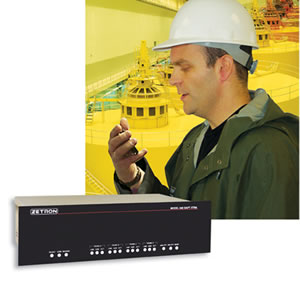 The Model 640 DAPT-XTRA Paging Terminal is a cost effective solution for small to medium-sized systems and private organizations offering a paging service based on bureau-type operator paging and/or direct telephone access. The 640 supports up to 1,500 users with up to 4 telephone lines. It also supports voice paging, voice prompts, talkback paging, and alphanumeric paging.
The Model 640 DAPT-XTRA Paging Terminal is a cost effective solution for small to medium-sized systems and private organizations offering a paging service based on bureau-type operator paging and/or direct telephone access. The 640 supports up to 1,500 users with up to 4 telephone lines. It also supports voice paging, voice prompts, talkback paging, and alphanumeric paging.  Zetron's Remote Monitoring equipment provides monitoring and notification of unusual conditions and status changes. Messages are automatically transmitted over a radio or a public address system. Notification can be sent via speaker or radio announcement, telephone, cellular phone, or paging.
Zetron's Remote Monitoring equipment provides monitoring and notification of unusual conditions and status changes. Messages are automatically transmitted over a radio or a public address system. Notification can be sent via speaker or radio announcement, telephone, cellular phone, or paging. 


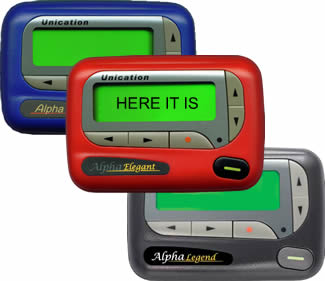
 NEW ALERT AND RINGTONE AMPLIFIER
NEW ALERT AND RINGTONE AMPLIFIER 


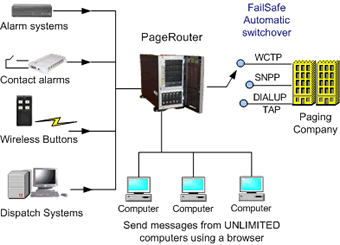



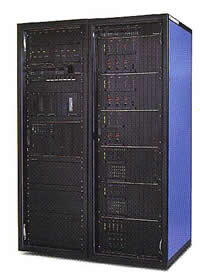

 If imitation is the highest form of flattery, then the executives of Waterloo, Ontario–based Research In Motion (RIMM) have been blushing for a decade. Since the company first released its BlackBerry handheld device in 1999, it has competed against a growing army of handset developers, including Motorola (MOT), Nokia (NOK), Palm (PALM), Google (GOOG), and Apple (AAPL), that all want to create smartphones that mimic the BlackBerry.
If imitation is the highest form of flattery, then the executives of Waterloo, Ontario–based Research In Motion (RIMM) have been blushing for a decade. Since the company first released its BlackBerry handheld device in 1999, it has competed against a growing army of handset developers, including Motorola (MOT), Nokia (NOK), Palm (PALM), Google (GOOG), and Apple (AAPL), that all want to create smartphones that mimic the BlackBerry.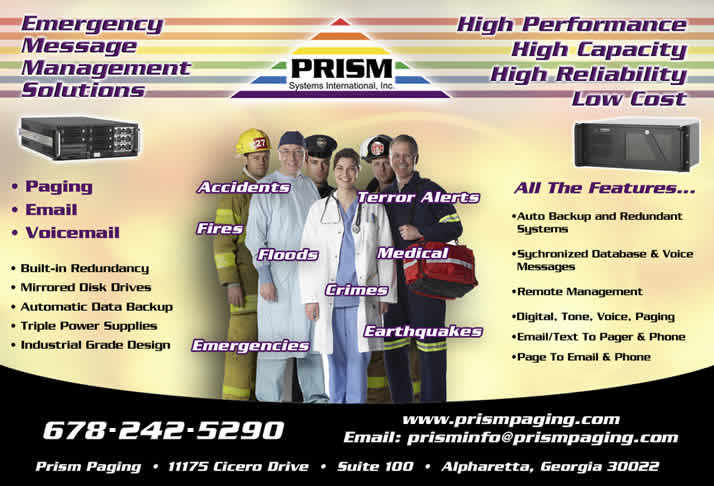

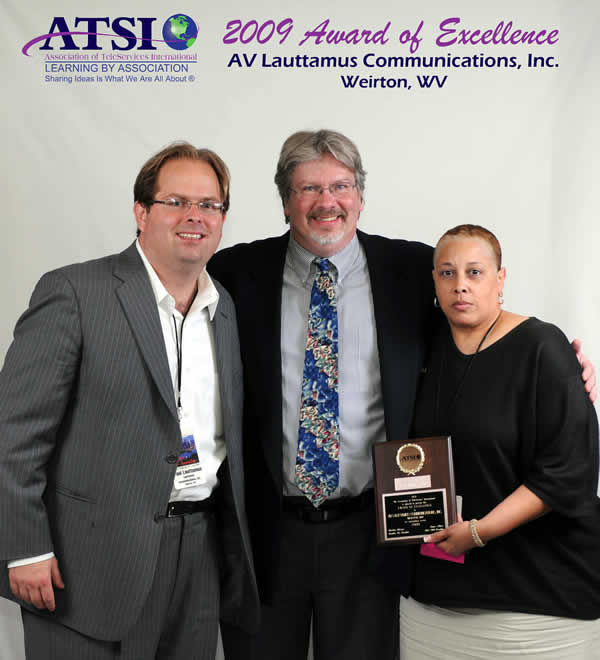


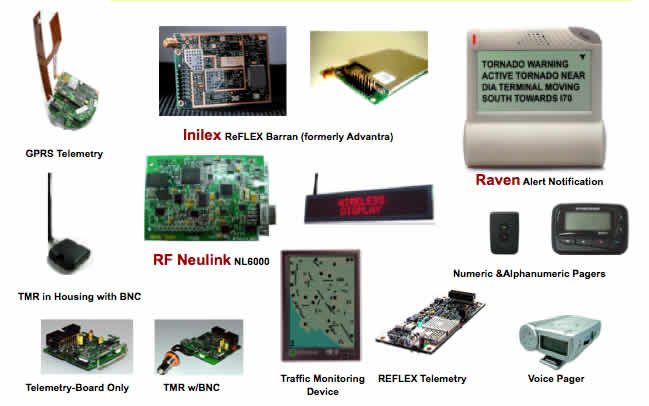

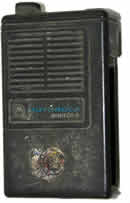
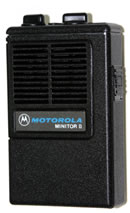



















 The first day the Apple iPhone 3GS went on sale was the biggest sales day ever for AT&T, according to an internal memo sent to company employees that has since been published in various blogs.
The first day the Apple iPhone 3GS went on sale was the biggest sales day ever for AT&T, according to an internal memo sent to company employees that has since been published in various blogs.





